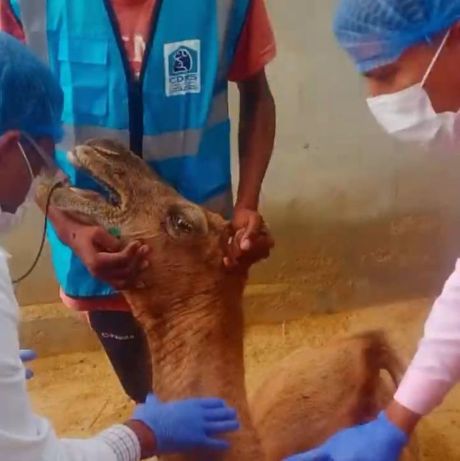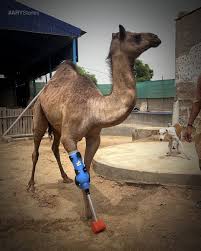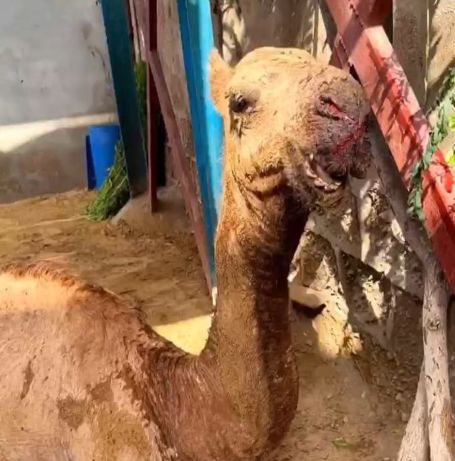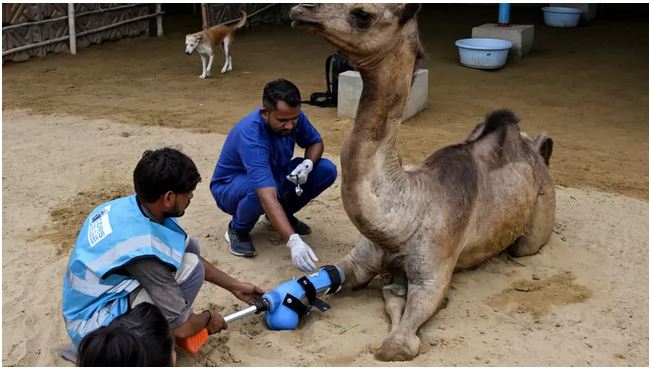Where the Feudal Lords Rule, Even the Animals Suffer

By Nasir Aijaz
The AsiaN Representative
ISLAMABAD: Across Pakistan in recent years, a disturbing pattern of cruelty has emerged, revealing a brutal undercurrent in rural life: livestock such as camels and buffaloes have been deliberately maimed as punishment for straying into farmlands or becoming entangled in minor disputes.
These are not isolated stories about animal welfare alone — they expose the deeper intersections of rural poverty, social hierarchy, and the shadow of feudal power that still dominates many regions of the country.
One of the most horrifying cases unfolded in June 2024 in the Sanghar district of Sindh province, where a camel’s front leg was chopped off by a landlord after it wandered into a field in search of fodder.
The images and videos that surfaced on social media triggered anger nationwide. The camel, later nicknamed “Cammie,” was rescued and taken under the care of animal welfare groups in Karachi.
Months later, with the help of veterinarians and provincial authorities, Cammie was fitted with a prosthetic limb and painstakingly relearned how to walk — a rare moment of compassion in an otherwise grim landscape.
Another incident occurred not long afterward in Sukkur, Sindh, where a camel was mercilessly beaten after it entered a landlord’s field to drink water. The animal suffered facial injuries and a crushed hind leg. Once again, public outrage on social media forced the authorities to act.
Police registered a case and veterinary teams stepped in to save the wounded camel, which was later transferred to a specialized facility for care.

In Punjab province, similar brutality has been witnessed repeatedly. One case reported from Lodhran in late 2024 involved individuals accused of severing the leg of a buffalo, leaving the animal crippled and bleeding.
Media reports also surfaced from other districts, including Gujrat, describing comparable acts of violence against livestock. These are not random acts of cruelty but recurring incidents that reflect a troubling pattern across Pakistan’s rural belt, where animals, the backbone of small farmers’ livelihoods, are often targeted in acts of punishment or revenge.
While each case sparked outrage, the official responses have been uneven. In Sindh, provincial authorities and animal welfare groups took notable steps to provide treatment and rehabilitation.
Surgeries were conducted, animals were moved to shelters, and in the case of Sanghar a prosthetic limb was developed and attached. Police registered First Information Reports and made some arrests, but only after intense public and media pressure. Yet, accountability often stops there.

When the perpetrators are powerful landlords or influential figures, the path to justice becomes slow and uncertain, exposing the fragility of law enforcement in the face of local power.
To understand why such barbaric acts continue, one must look at the structure of power in rural Pakistan. In many parts of Sindh and southern Punjab, large landowners, often referred to as “waderas” or feudal lords, hold vast influence over land, local police, and the administrative machinery.
For generations, small farmers and landless laborers have lived under their patronage, bound by economic dependency and social hierarchy. Disputes over grazing rights, water access, or minor crop damage can easily ignite conflicts, especially when the poor have little recourse to justice.
For the powerful, attacking an animal that belongs to a poor villager serves as both punishment and a message — it asserts dominance, enforces obedience, and warns others not to challenge authority.
In this context, animal cruelty becomes a grim instrument of social control. The cutting of a camel’s leg or the maiming of a buffalo is not merely an act of violence against a creature; it is a symbolic attack on the dignity and survival of the families who depend on these animals for milk, transport, and livelihood.
For a poor household, losing a camel or buffalo means losing its primary source of income. It can push a family deeper into debt, hunger, or dependency, outcomes that reinforce the very power structures responsible for the cruelty in the first place.
The public response to these incidents, particularly through social media and independent journalism, has played a crucial role in drawing attention to the issue. It was the viral outrage that forced officials to act in Sanghar and Sukkur, leading to arrests and veterinary intervention.
But reliance on outrage is not a sustainable solution. Without systemic change, such acts of cruelty will continue to recur, hidden away in villages where there are no cameras, no protests, and no hashtags.

Preventing this pattern requires more than compassion; it demands institutional reform. Law enforcement must be impartial and independent of local influence so that justice is not determined by the social status of the accused.
Provincial governments should create rapid-response veterinary teams to treat injured animals swiftly and provide emergency assistance to poor owners. Local dispute-resolution mechanisms over grazing and water rights should be strengthened to prevent violence before it erupts.Above all, public education, through schools, media, and religious and community leaders, must challenge the normalization of animal cruelty and reinforce the idea that harming a defenseless creature is an assault on humanity itself.
The story of Cammie, the Sanghar camel who learned to walk again on an artificial limb, stands as a rare symbol of hope. It shows what compassion, coordination, and civic pressure can achieve when society refuses to look away. Yet prosthetics and rescues, however heartening, cannot heal the deeper wounds that allow such cruelty to persist.
Until justice is blind to power and until rural communities are protected from both poverty and fear, Pakistan’s fields will continue to bear witness not only to the suffering of animals but also to the endurance of human inequality.



